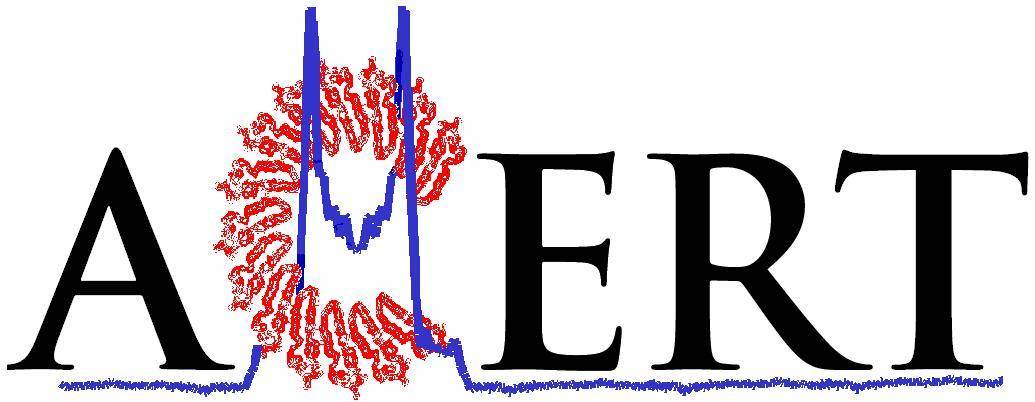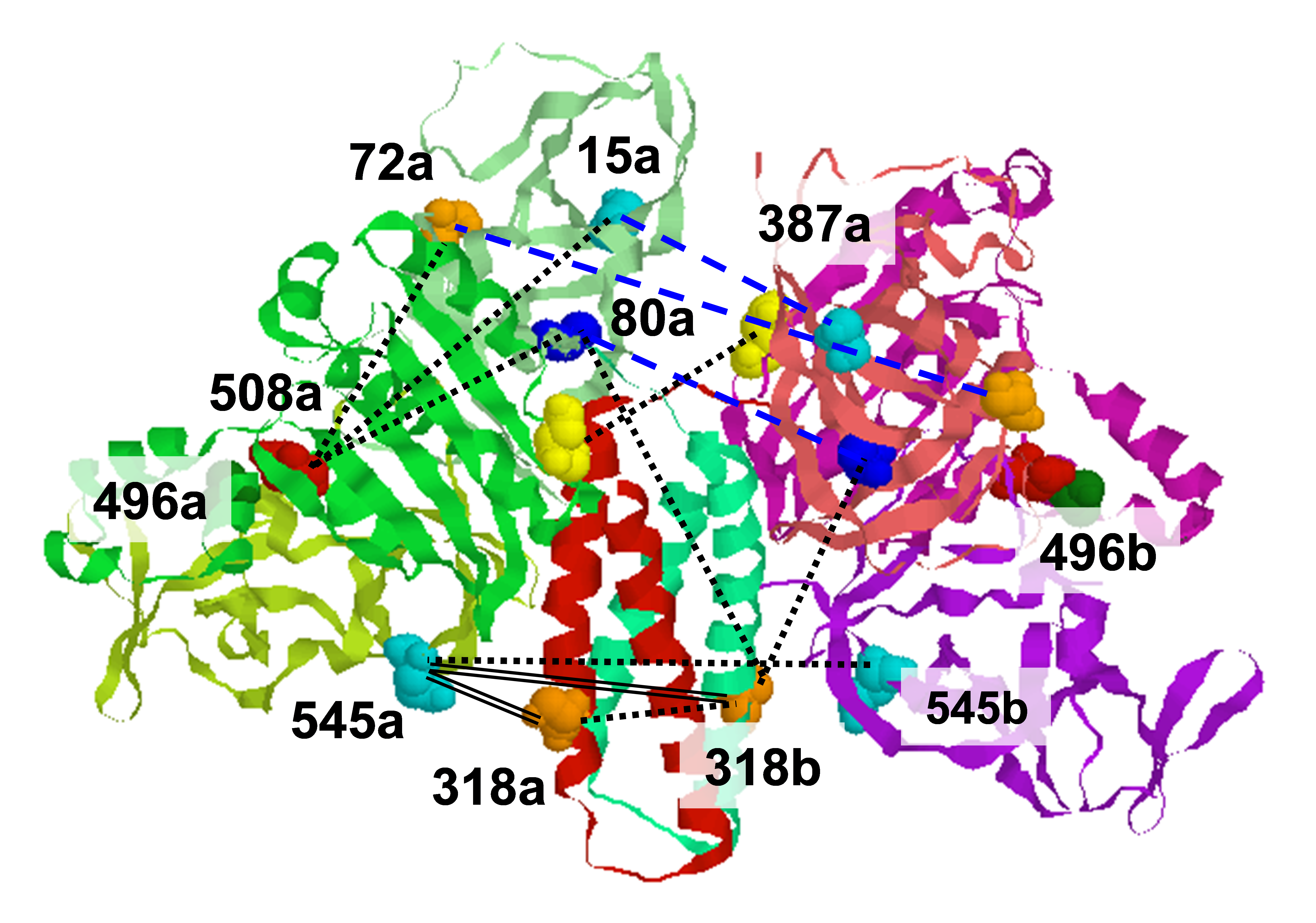.svg) National Institute of General Medical Sciences |
 |
 |
National Biomedical Resource for |
| ACERT's Service and Collaborative Projects | |
The PDS technique, including DEER, DQC, and DEER-5 all are being applied to measure the dipolar coupling between two unpaired electrons, which can be used to determine the distance between them. In most cases nitroxide spin-labels have been used for these purposes. The high spin sensitivity demonstrated at Ku-band with these techniques, enables us to expand the class of paramagnetic probes that can be used in studying the structure of proteins. We are currently investigating PDS-ESR using Cu(II) as the paramagnetic center. While Cu(II) was used in the past for this purpose, its utility was often compromised by insufficient signal-to-noise, limiting the range of distances that can be routinely measured in low-concentration samples. Our model system is the protein human superoxide dismutase (hSOD1). SOD1 is a homodimer with 1 Cu2+ ion in each subunit, with the Cu2+ ions separated by approximately 32Å. Mutations in SOD-1 are known to cause familial amyotrophic lateral sclerosis (fALS), a fatal neurodegenerative disease. We are exploring how fALS mutations near the dimer interface affect the Cu-Cu distance. Distance distribution information may lead to insight as to how these mutations are implicated in ALS, which is currently unknown. The study of several ALS mutants demonstrated, as shown in the Figure, that for some mutants a greater range of protein disorder is observed, supporting the idea of a destabilizing role of these mutations, which is consistent with recent findings by other techniques. Publication: G.E. Merz, P.P. Borbat, A.J. Pratt, E.D. Getzoff, J.H. Freed, and B.R. Crane, Biophys. J., 107, 1669-1674 (2014); PMC4190658. |
|
|
|
| Gregory E. Merz, Peter P. Borbat, Jack H. Freed, and Brian R. Crane (ACERT) | |
|
|
About ACERT Contact Us |
Research |
Outreach |
ACERT is supported by grant 1R24GM146107 from the National Institute of General Medical Sciences (NIGMS), part of the National Institutes of Health. |
|||||
| ||||||||